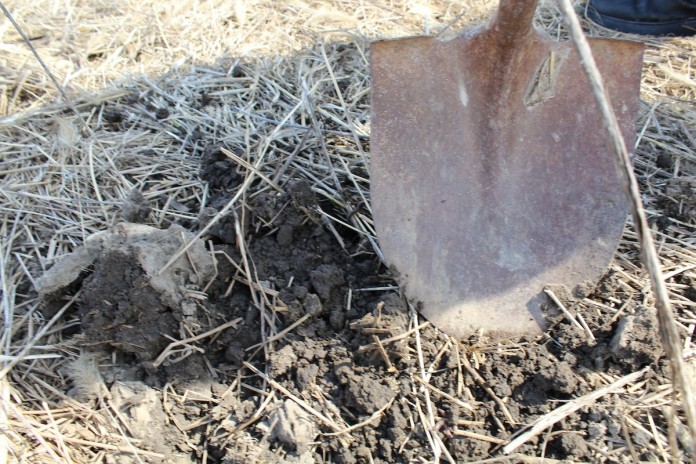Fall is an ideal time to plant balled-and-burlapped trees because it allows time for their root systems to become established before spring.
Tree roots will grow as long as the soil temperature remains above 40F. When trees are planted during the fall, their root systems will continue to develop throughout winter. These more expansive root systems are then better equipped to support spring growth.
Balled-and-burlapped trees, especially, can benefit from the downtime afforded by fall planting as they can lose up to 90% of their root systems when they are removed from the ground to be balled and burlapped and may rely on time to fully recover from transplanting.
Before planting
Before investing in new trees, consider how the resources available in your yard line up with the resources different species of trees require to survive. Ask and answer these questions:
- Will the chosen species do well in your growing zone? Always remember that native plants will establish easier, require less maintenance and probably grow better than non-native varieties. It’s also prudent to make sure you’re not planting anything that’s considered invasive in your area.
- Will the chosen species grow in your soil? There are tree species that will grow in all types of soil — heavy clay, sand, rocky, mixed — of all moisture levels. You should pick a species that will grow well in the soil in your yard.
- Will it grow well in sun, shade or a partially shaded area? If you have a specific location in mind to plant a new tree, consider how much light that location gets throughout the day and chose a variety that will thrive under those conditions. Or if you have a specific species picked out that’s tolerant of your soil, be mindful of its sunlight requirements before choosing a location. It’s much easier to consider the needs of the tree beforehand than attempting to transplant it later.
- Will it impact the other plants it’s near and vice versa? The potential for negative interactions should be taken into consideration before planting a new tree because some trees can negatively impact the other plants around them. One example would be black walnut trees. They release juglone into the soil, which is toxic for many other plants. There are those that are tolerant, but this should be considered before planting a black walnut tree or planting anything near a black walnut tree. When you go to a nursery to select your tree, inquire about any known negative interactions before purchasing a new variety.
Should you remove the burlap?
A fair amount of debate surrounds planting balled-and-burlapped trees. On one hand, there’s the argument to plant them with the burlap and cage (if one has been placed outside the burlap) to protect the root ball and keep it intact. On the other hand, there’s the argument to remove it so the tree’s growth is not impacted over time by the burlap and cage.
Leaving the burlap on. Most sources seem to agree that leaving the burlap and wire cage on helps the tree become established quicker because the root ball is not disturbed, the remaining roots are protected and the soil structure around the root system is maintained. Natural burlap will decompose on its own over time and the tree will grow around the cage.
Removing the burlap. However, some opt to remove the burlap because they believe leaving the burlap and cage negatively affects the long-term health of the tree. The thought is that burlap hinders root development by creating a barrier between the root ball and natural soil as it decomposes and a cage is an immovable object the tree cannot grow around.
In some circumstances, removing the burlap is the only option. When synthetic burlap is used it must be removed. It’s mostly made of plastic, which means it will not decay and will impact the outward growth of roots.
Planting balled-and-burlapped trees
- Dig a hole that is twice the diameter, but is no deeper than the root ball.
- Set the tree in the hole so that it is upright and correctly positioned.
- Remove twine from around the base of the tree trunk and basket.
- Check the burlap by burning a little piece of it. Natural burlap will burn to ash, while synthetic burlap will melt and form a bead.
- If the burlap is plastic, use a sharp knife to remove as much as possible without breaking up the root ball.
- If the burlap is natural and you’ve decided to leave it on, fold it down along the sides of the root ball where it can be left in the planting hole to decompose.
- If there is a wire cage, cut and remove the top one-third of the basket so it doesn’t strangle the tree as it grows. The bottom of the cage can be left intact.
- Start backfilling the hole with dirt you removed to dig the hole until it is half full.
- Tamp down the soil without packing it too tightly.
- Saturate the dirt with a gentle stream of water to settle the soil and remove large air pockets. Do not over-saturate the soil into a slurry.
- After the water soaks in, finish backfilling the hole so that it’s even with the base of the tree trunk. The portion that flares outward should be visible. In trees without this characteristic, the soil should only be backfilled to cover the topmost roots.
- Add a 4-6 inch layer of straw or mulch to hold in moisture.
- Your newly planted tree should be watered every 7-10 days when there’s no precipitation.
- Wait to fertilize until spring and even then only fertilize lightly.











